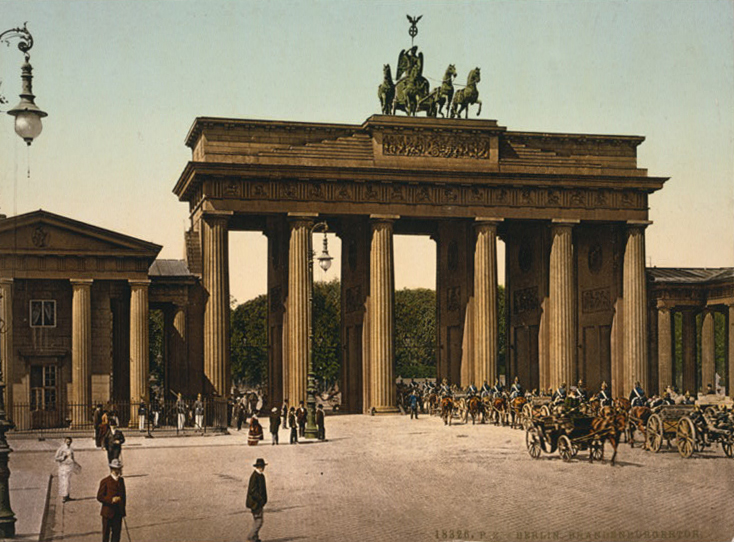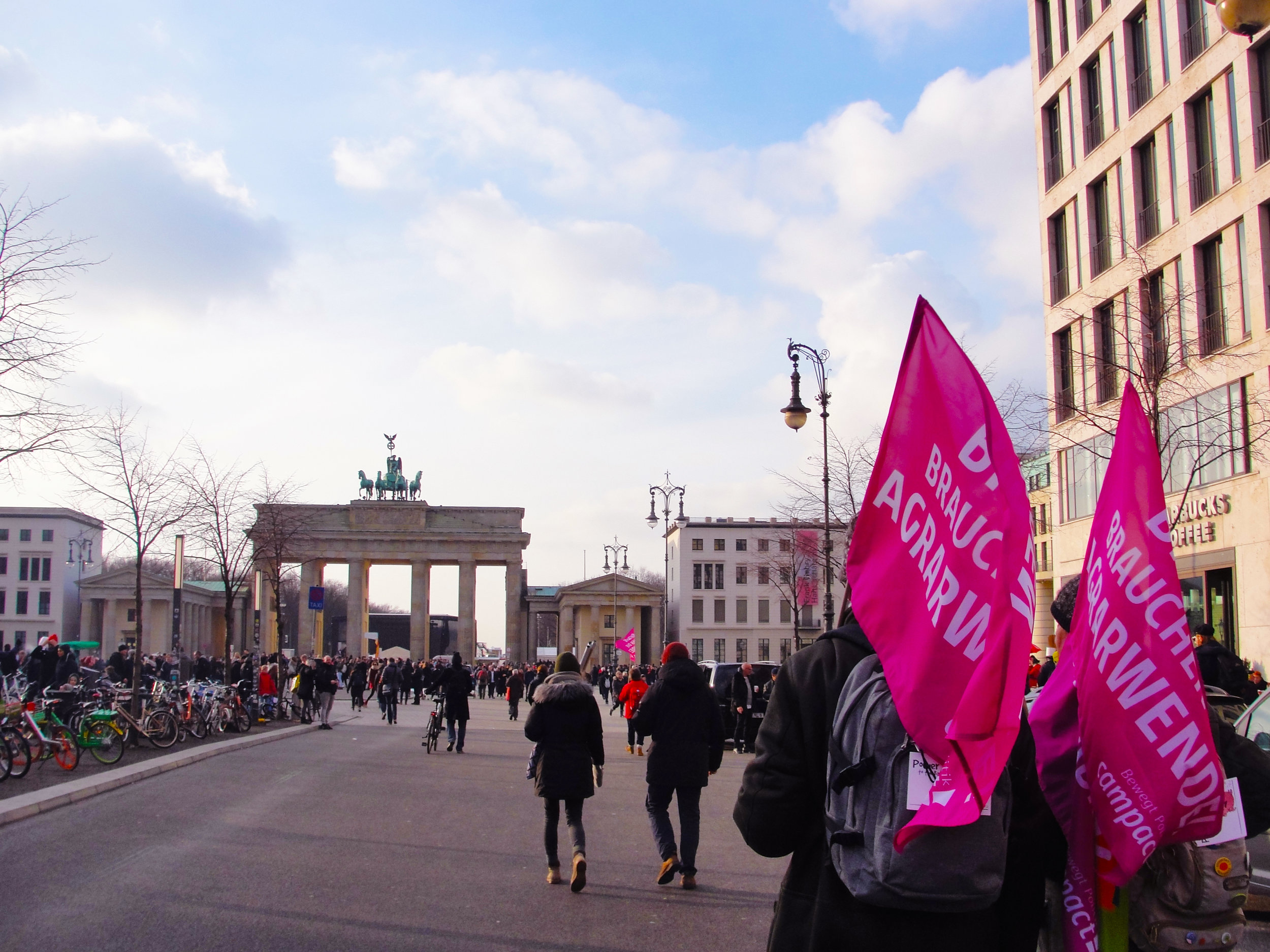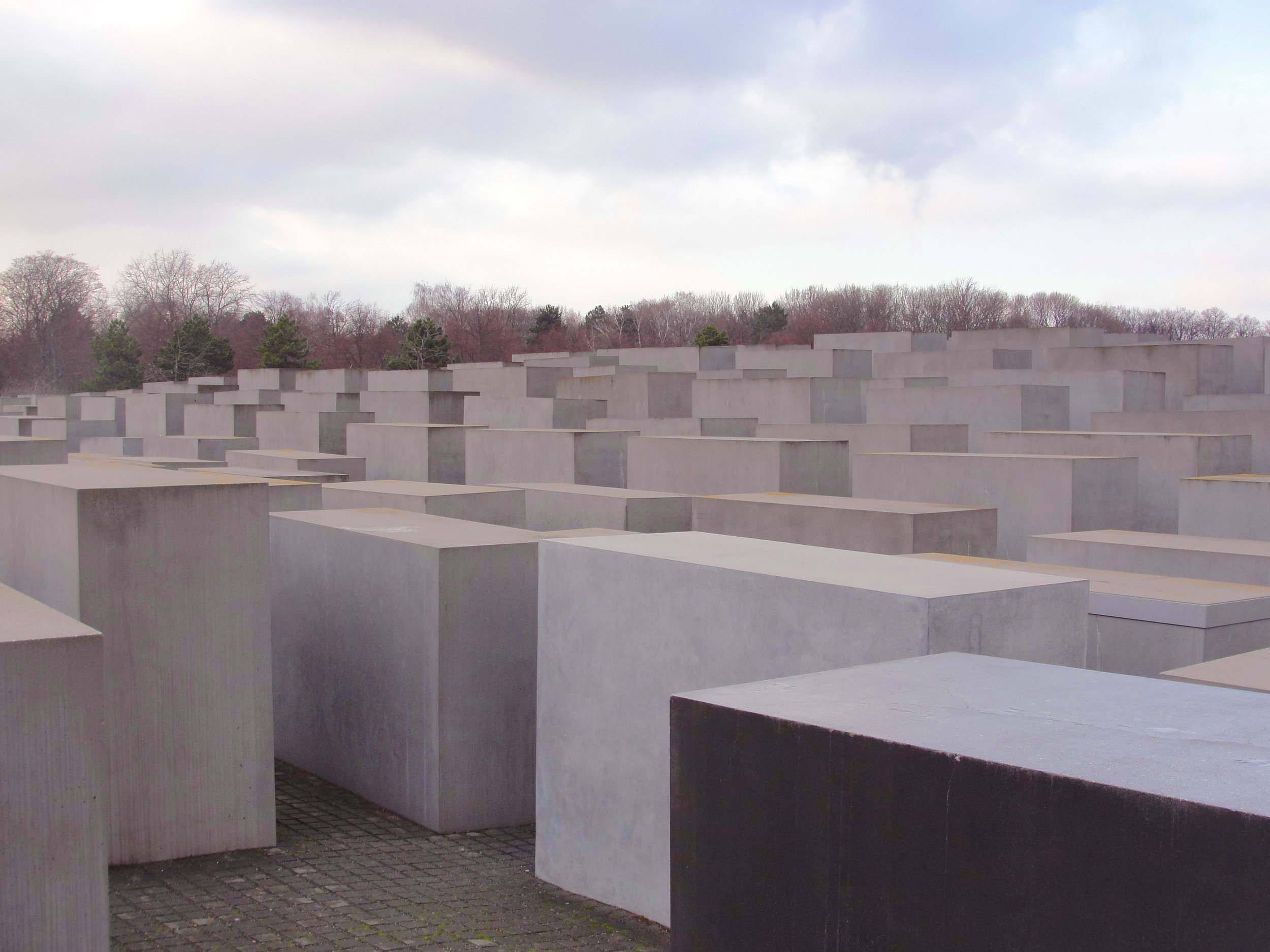A Free Day in Berlin

I traveled to Berlin for a short and free historical visit.
Cover Photo: Brandenburg Gate, Berlin, Germany (2019). Courtesy of Felix Backer.
Where the East Meets West
After mentioning the fall of the Berlin Wall in my prior post, I thought it was appropriate to continue with a post about this historic city. I took a five hour bus ride from Wrocław, Poland, to Berlin, Germany, to celebrate my friend Karl’s 30th birthday.
I couldn’t resist the chance to finally see Berlin. In addition to the prominent role Berlin played in American textbooks, I was eager to see the city because of movies like Good Bye Lenin! (2003) and Atomic Blonde (2017). I met Karl’s friends Angelina and Neal and together we went off to see Berlin’s most important cultural sites!
I was astounded by the amount of history; you can still notice a difference between East and West Berlin. Much of architecture on the West side is International Style like in New York and Chicago, while the East has a lot of Soviet influence. I felt like I was in Poland; in fact there are many streets and landmarks named after Warsaw!
You can read the rest of the article to join us on our eventful (and free) day in Berlin!
Skyline of Berlin including, from left to right, Reichstag, Berliner Fernsehturm, Berlin Cathedral, Rotes Rathaus, and the Brandenburg Gate (2012). Courtesy of Thomas Wolf.
Berlin Wall (East Side Gallery)
We began our tour of Berlin at the East Side Gallery. The East Side Gallery is the longest surviving piece of the Berlin Wall and it now serves as a 1.3 kilometer (.8 mile) open-air gallery covered in murals dedicated to the destruction of the Iron Curtain.
The Berlin Wall was erected by East German authorities, under the direction of Premier Khrushchev, in 1961, to stop defectors from leaving to West Germany. The wall was a physical manifestation of the ‘Iron Curtain’ as coined by British Prime Minister Winston Churchill back in 1946. At least 171 people were killed trying to escape East Germany.
The situation was set in motion in 1945, at the Potsdam Conference, in which Berlin and other cities were divided into four parts among the Allied victors of World War II, the United States of America, Britain, France, and the Soviet Union. The Cold War, coined by English writer George Orwell, is considered to have begun in 1947 with the Truman Doctrine, when U.S. President Truman “established that the United States would provide political, military and economic assistance to all democratic nations under threat from external or internal authoritarian forces.” The Federal Republic of Germany (West Germany) was established by the Western Allies in 1949 and the German Democratic Republic (East Germany) was established in the same year.
As the Cold War began to thaw, U.S. President Reagan visited West Berlin to deliver his famous “Mr. Gorbachev, tear down this wall!” speech in 1987. The Berlin Wall fell in November of 1989 when the Communist Party of East Berlin announced GDR citizens were free to cross the country’s borders.
My God, Help Me to Survive This Deadly Love, is the most well known mural at the East Side Gallery. The mural is based off a real photo of a socialist fraternal kiss that was a common form of greeting between Communist statesmen. The image depicts Soviet President Leonid Brezhnev and East German leader Erich Honecker in a passionate embrace during the 30th anniversary of the German Democratic Republic of East Germany in 1979.
The socialist fraternal kiss mural was first painted by artist Dmitri Vrubel in 1990, well after the collapse of the Iron Curtain and the death of Brezhnev. Today the image is considered “a potent symbol of Communism's corruption and ultimate failure.” I had to get a photo.
One of my favorite artists, Keith Haring, painted the wall in 1986, three years before the collapse.
Spree River
After the East Side Gallery, we walked to the Schlesisches Tor U-Bahn Station, passing the Spree on the Oberbaumbrücke.
Berlin Metro
The Berlin metro system is among the oldest in the world, first built in 1902, but the system has been well-kept and is totally reliable. At peak hours trains run every 3 to 5 minutes!
Getting around is easy. There’s a total of 10 Bahn (train) lines, nine U-Bahn crisscrossing the city and the S-Bahn that runs in a circle around Berlin. S-Bahn run both clockwise and counter-clockwise. Pay attention! I made the mistake of going in the wrong direction when leaving to catch my FlixBus to Gdańsk.
Berlin is divided into three tariff zones and there are a variety of tickets to choose from, based on time, distance, and zone. The most convenient ticket is the single fare which is valid for two hours. For all three zones a full price single fare ticket costs 3.40 euro (approximately $4) and reduced is 2.50 euro (approximately $3).
For more information about fares, you can visit the metro website.
Brandenburg Gate
We rode the U-Bahn to central Berlin and we walked towards the Brandenburg Gate. The Brandenburger Tor (in German) is the most iconic monument of the city.
The Gate has borne witness to radical change in Berlin and it remains a constant icon throughout the city’s history. It was commissioned by the Prussian King Frederick William II as an entrance to the street leading to his palace. The gate was built in 1788-91 by master architect Carl Gotthard Langhans, inspired by the entrance to the Parthenon of Athens. The monument is crowned by a quadriga, a chariot drawn by four horses, carrying Victoria, the Roman Goddess of victory, which was added in 1793. The center of the gate was reserved for royalty.
Napoleon’s forces entered Berlin through the gate in 1806 and the French occupation lasted two years. The Weimar Republic was established in 1919 and lasted until Adolf Hitler was elected chancellor in 1933, adopting a one-party state. The gate was frequently used in Nazi propaganda, including parades, like for Hitler's 50th Birthday in 1939.
The Brandenburg Gate was damaged during World War II and restored in 1957-58. The Gate sat along the Berlin Wall, on the Eastern side, which was built in 1961. The Gate served as a backdrop to U.S. President Reagan’s infamous 1987 speech in which he demanded, “Mr. Gorbachev, tear down this wall!” and 100,000 people gathered at the Brandenburg Gate for it’s official opening on December 22nd, 1989.
The day we went to see the Gate, there was a march of 35,000 people calling for eco-sustainable harvests and increased subsidies for family farms. As I walked the streets lined with tractors I was stunned by the amount of change that has occurred in Berlin’s long history.
Soviet War Memorial
We stopped briefly at the Soviet War Memorial, dedicated to the Soviet Armed Forces of World War II, erected, with the support of Allied Forces, in 1945. The Cyrillic inscription underneath the statue of the soldier reads,
Memorial to the Murdered Jews of Europe
We also paid our respects at the Memorial to Murdered Jew of Europe; the solemn Holocaust memorial in the middle of the city, was designed by New York architect Peter Eisenman and opened in 2005.
The memorial covers 19,000 square meters (.007 miles) and consists of 2,711 concrete pillars of various heights, reminiscent of sarcophagi. From far away the memorial looks like an undulating wave. The intersections are narrow, claustrophobic, and block any view of the city. It is easy to get lost in the chaos. Even though I had come with friends, I found the experience deeply alienating, anonymous.
According to Eisenman,
The site is meant to commemorate the six million Jews murdered during the Holocaust but there is no plaque, names, or visible explanation. The site is too minimal, in my opinion, which leads to disrespect. In 2017 Israeli-German writer, Shahak Shapira started a website featuring inappropriate photos taken at the memorial titled “Yolocaust”. Shapira has since taken down the photos, believing he’s proven his point. However, I was appalled to see many people playing among the columns and taking smiling selfies. I would remind anyone who visits to be respectful and mindful of the lives lost.
If you are interested in learning about the Holocaust firsthand, I would recommend visiting The Auschwitz-Birkenau Memorial and Museum in Oświęcim, Poland.
Mall of Berlin
For a quick dinner, Angelina, Neal, and I stopped at the Mall of Berlin, one of Berlin’s largest shopping complexes, at Leipziger Platz. The mall has an immense food court and we all easily found something good to eat. I settled for Vietnamese beef pho because I was sick with a cold. We walked around the stores for a while (the mall has all my favorites: Adidas, Zara, H&M) before leaving for Karl’s birthday party.
Eager to Return
It was a long day but I am so thrilled to have seen the historic city and I definitely would recommend all of these sites to a first-time visitor to the city! I am eager to return, though, as there is so much to see in Berlin!
P.S. Questions!
Have you ever been to Berlin? Are you planning to go?





























